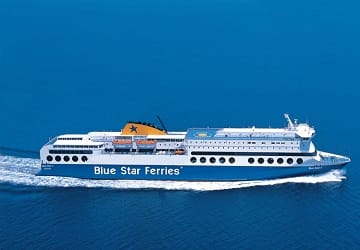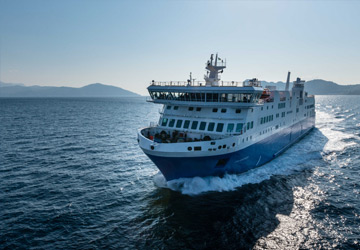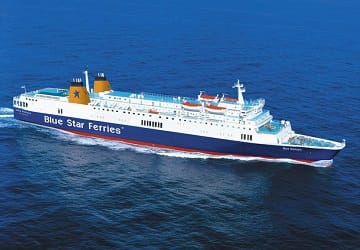
-
Recent Searches
Recent Searches
- Travel Alerts
- My Account
- Customer Service
-
United Kingdom
Patmos to Syros Ferry
The Patmos Syros ferry route connects Dodecanese Islands with Cyclades Islands. Currently there is just the 1 ferry company operating this ferry service, Blue Star Ferries. The crossing operates up to 3 times each week with sailing durations from around 3 hours 25 minutes.
Patmos Syros sailing durations and frequency may vary from season to season so we’d advise doing a live check to get the most up to date information.
Patmos Guide
Located in the Aegean Sea, the Greek island of Patmos is part of the Dodecanese group of islands. It is one of the most northerly islands in the Dodecanese and lies just off the west coast of Turkey. Patmos' capital is the town of Chora and its port is in the town of Skala. The island, which is also known as the "island of the Apocalypse" is popular with tourists from around the world. However, there is more to the island than this. It is a pretty island with traditional whitewashed houses, crystal clear waters, excellent food and a thriving nightlife.
The Cave of the Apocalypse, a major visitor attraction, is reputedly to have been the cave where Saint Ioannis heard the voice of God and wrote the Apocalypse. In the cave, visitors can see the cross engraved by Saint Ioannis along with three small cracks on the rock through which the voice of God came, symbolising the Holy Trinity.
Patmos is connected by ferry to Piraeus, the other islands of the Dodecanese, and also with other islands of the Aegean Sea, like Samos and Ikaria. The ferry from Piraeus takes about 7 hours to reach the port of Patmos. The journey to the nearby islands of the Dodecanese take about 1-1.5 hours, while the trips from Ikaria or Samos take a little longer.
Syros Guide
The Greek island of Syros is one of the Cyclades group of islands and is unusual in that the island's architecture is more medieval rather than the more typical Cycladic. The island's capital is Ermoupolis and has some fine examples of Venetian mansions to see. In the Vaporia quarter of the capital visitors will find some lovely large churches and impressive neoclassical buildings, such as the Town Hall and Apollo Theatre in the central square. Also popular with visitors are the island's beaches which are well equipped for tourists and have a good range of facilities.
The island can trace its history back to the 3rd millennium BC where signs of inhabitation have been found in the Halandriani and Kastri parts of the island. Artefacts found indicate that there was some kind of metal workshop on the island which possibly had a trading relationship with Asia Minor. The Samians occupied the island in the 6th century BC and is when many of the island's inhabitants moved to the island. At that time, the important physician and philosopher Pherecydis was born in Syros and some years later he went to Samos and became the teacher of Pythagoras.




